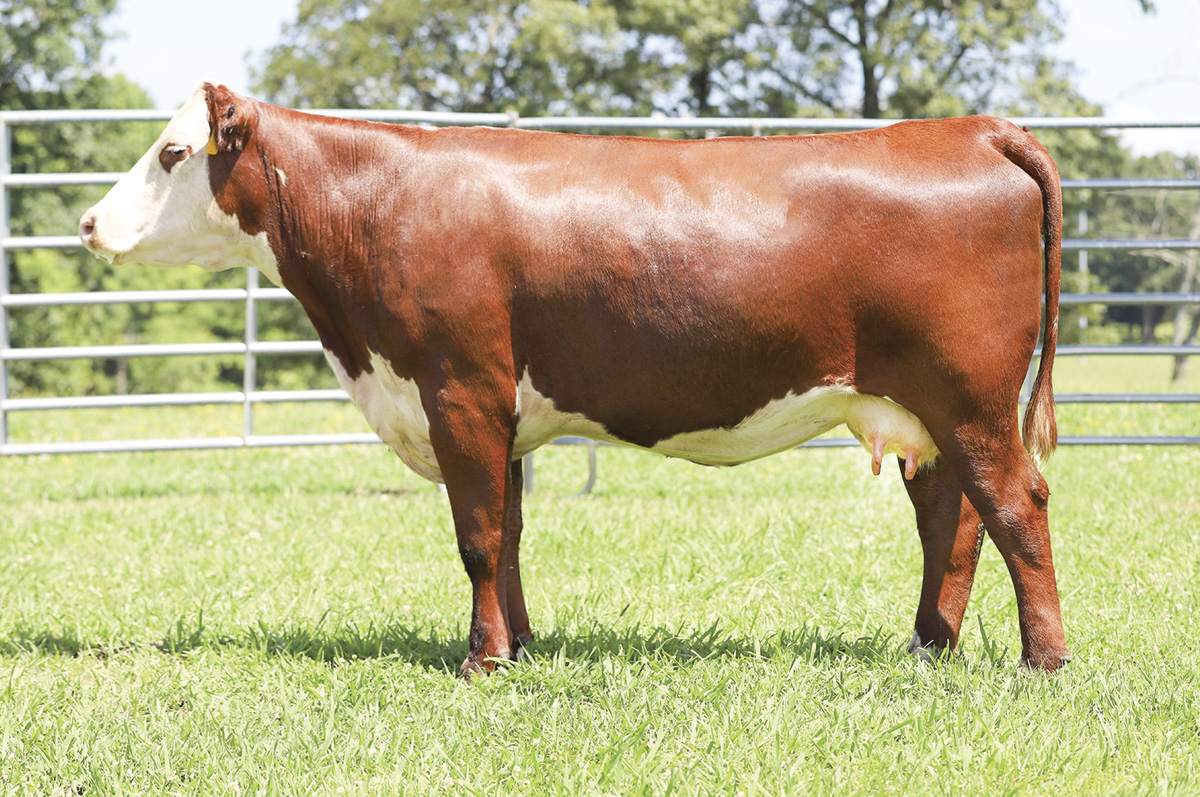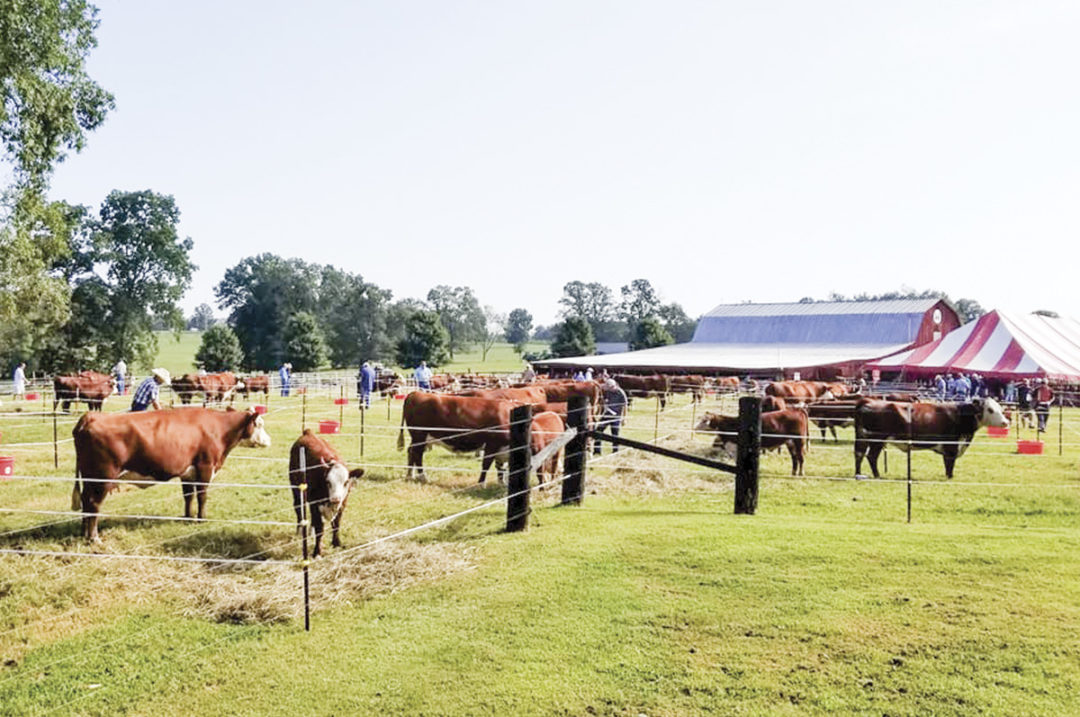Adding females to a sale can be a big decision for a producer. The type of sale, where to focus marketing efforts and how to stay relevant in an ever-evolving business all play into the decision. While making those decisions, there are things you should consider to best prepare your females to sell successfully.
What to consider
Before considering entering females into a sale, producers should first make sure they have enough replacements to keep their cowherd going in the direction they want it, says Matt Macfarlane, owner of M3 Marketing, a purebred cattle marketing service specializing in managing sales.
Eric Walker, a Tennessee cattle producer with an annual female and bull sale, agrees with this and states, “You should select animals to sell that you would buy yourself. We have a motto around here: 'If we don't want it for ourselves, we're not going to sell it to anybody else.'”
He adds that you don’t just have to sell yearlings. Mature cows can provide producers with proven genetics to enhance their herds in the direction they are working toward.
Bill Goehring, an Iowa cattle producer and owner of a local livestock market says, “Developing a consistent program over time is even more important than providing only a few high-quality females. A quality and consistent program will increase the value of each female.”
Today’s technology helps provide data for producers so they can be certain of the animals they are purchasing.
“I recommend using genomic enhanced EPDs [expected progeny differences],” Walker says. “This helps guarantee the animal your buyers are receiving. We also try to sell animals that fit with the direction the breed is heading to stay relevant and help our customers produce the best cattle possible.”
Marketing differently than bulls
The first thing a producer needs to do when marketing females for sale is to make sure they have a market with a need and want for what they are selling, Macfarlane says.
Sale day all comes down to how you promote your product, says Jack Holden, a Montana cattle producer with an annual female and bull sale. You can’t expect people to just come to you. You need to reach out to potential and past customers and continue building customer relationships and promoting your brand.
“Advertising is expensive,” Holden says. “Knowing who you need to target and taking the time to get it right will help you be successful and allow your business to keep moving forward.”
He adds, it all comes down to the presentation of the females. You need to create demand for your females.
“No matter how you're going to market your animals, the number one thing you need to do is have a quality video,” Holden says. “And if you're going to sell online only, you really need to have quality pictures as well because you need to have something to get buyers interested enough to pull them in and for them to click on the video.”
Not only should the videos and photos be quality, but the animals should be looking their best, Macfarlane says. Cattle should be in good condition, cleaned up and in the best look and shape possible.
“You need to know your value and capitalize on those traits that are making your cattle in demand,” Macfarlane says.
There are many ways producers can sell their cattle, whether through private treaty, on-farm auctions, online or consignment sales. Regardless of how it is done, producers who provide extra value to their customers are the ones who really become successful.
Adding value by providing well-presented, consistent cattle offers a competitive advantage, Goehring says. Sorting by calving window time frames, preg checking and providing calf sexes are a few of the ways they provide added value to their customers, he adds.
Timing of sales can play an important role in the success of a sale. Knowing when your customers are looking for replacements and additions to their herd is another way to add value for your sale, Goehring says.
“When it comes to marketing females, the things that typically work best are having current genetics and current pedigrees,” Macfarlane says. “Everyone knows what is out there, so to be successful selling females, you need the most up-to-date genetics. Things that work against you include poor presentation, poor condition and poor quality of animals.”

A Walker Hereford Farm cow looks her best on photo day. Photo courtesy of Walker Hereford Farm.
The future of selling females
Selling females has a bright future for many producers as more options for types of sales and technology to aid in the sales continue to rise.
“The demand for females in cow production is going to be very high over the next three to five years,” Goehring says. “Producers have an opportunity to capitalize on breeding females and making high-quality females as the demand for beef rises.”
With the use of social media, private treaty and online sales have become increasingly popular over the past few years, Walker says. It can be a fairly cheap and easy way to market and even sell cattle.
Macfarlane adds that while online sales and promotion of animals through social media have been very popular, especially for smaller sales with fewer head, you have to have high-quality videos that represent each animal accurately. Additionally, producers typically prefer getting to see animals in person before purchasing anything, for added assurance of the quality of the product they are purchasing.
“People still love a live auction,” Macfarlane says. “They love the excitement. They love the social aspect of it. So, I don't think auctions are going anywhere anytime soon. But the online part can be a nice addition to it to help the sale reach more producers.”
Walker agrees that live auctions on-farm are typically preferred. Whether the animals go through the sale ring or a video is played on a screen, being able to put your eyes on an animal in person and having face-to-face contact between a buyer and seller adds a certainty to the purchase, Walker says.
“A successful auction comes from the breeder doing … due diligence in terms of producing something that has quality and providing integrity and honesty behind it,” Macfarlane says. “There's your longevity in selling females right there.”
However a producer decides to sell females, it is agreed upon by all that the most important piece is your customers.
“Our customers are our friends, and we have relationships built with them,” Holden says. “We love new customers, of course, but the heartbeat of any program is repeat customers that come back again and again because our cattle have worked for them.”
He adds that talking to those customers to find out how to continue doing better will not only help your program develop and become better but will strengthen those customer relationships and provide females they want and will continue purchasing.
“You can never stop working and trying to make your cattle better,” Holden says. “You can never stop trying to build your customer base and market share. It’s a competitive business, so to be successful, you have to do those things well.”
When asked for a final piece of advice for producers selling females, Macfarlane ended with: “I’ve been in this business a while now, and it is the people who don’t take shortcuts and stand behind their product that are successful. It’s the people who take time to build long-lasting relationships with their customers. Honesty and integrity in your business dealings go a long way, and those who don’t follow these practices are where I see failures happen.”








